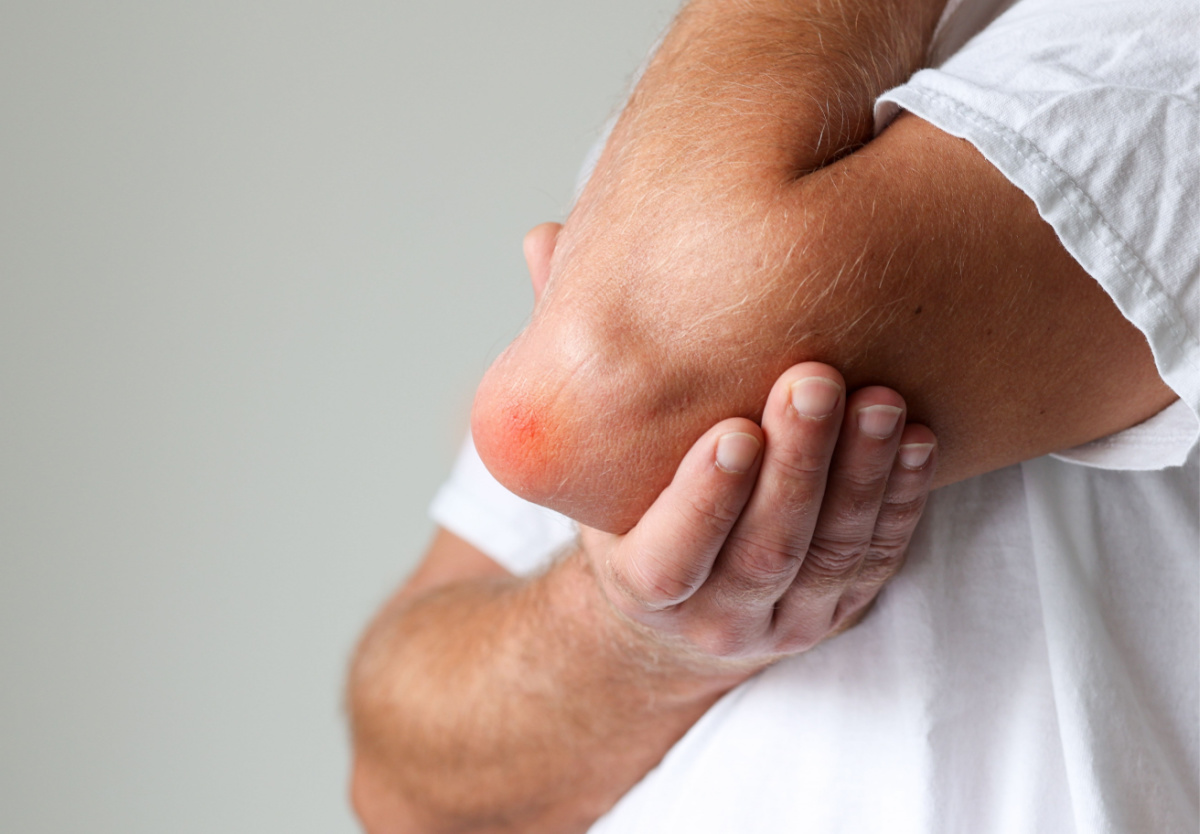
What Does Elbow Bursitis Look & Feel Like?
Elbow bursitis is a common condition that can cause discomfort and affect your daily activities. The olecranon bursa, a fluid-filled sac located at the tip of the elbow, acts as a cushion between the bone and soft tissues, reducing friction and aiding smooth movements. In the case of elbow bursitis, the bursa becomes irritated or inflamed, leading to a variety of symptoms.
Recognizing the Symptoms of Elbow Bursitis
When the bursa becomes irritated or inflamed, swelling occurs, leading to a noticeable lump at the back of the elbow. This swelling can be warm to the touch, and the skin around the affected area may appear red. The warmth and redness are signs of inflammation, and they contribute to the overall discomfort associated with elbow bursitis. The condition can also limit your range of motion, making it challenging to perform everyday tasks.
Elbow pain is a common symptom, and it may worsen when pressure is applied to the inflamed bursa. Individuals with elbow bursitis may experience discomfort when resting their elbow on a hard surface or when engaging in activities that involve repetitive elbow movements.
Causes of Elbow Bursitis
Elbow bursitis can be caused by various factors, including trauma, infection, and underlying medical conditions. Trauma to the elbow, such as a direct blow or prolonged pressure, can lead to inflammation of the olecranon bursa. In some cases, the presence of a bone spur — a bony projection that can develop at the tip of the elbow — may contribute to the irritation of the bursa.
Infections, including those resulting from insect bites or other skin conditions, can cause the olecranon bursa to swell. Additionally, conditions like rheumatoid arthritis can increase the risk of developing elbow bursitis.
Treatment Options for Elbow Bursitis
If you suspect you have elbow bursitis, it is essential to seek medical advice. A healthcare professional can assess your condition, determine the underlying cause, and recommend an appropriate treatment plan.
For non-infectious elbow bursitis, treatment options may include rest, ice, and anti-inflammatory medications to reduce swelling and alleviate pain. Physical therapy can be beneficial in restoring range of motion and strengthening the muscles around the elbow joint. In some cases, wearing an elbow pad can help protect the inflamed bursa from further irritation.
In situations where the bursa is infected, antibiotics may be prescribed to address the underlying infection. In severe cases or when conservative treatments are ineffective, healthcare providers may consider more invasive interventions, including draining the fluid from the bursa or, in rare instances, elbow surgery to remove the inflamed bursa or address the underlying causes of elbow pain, such as a bone spur.
Don’t Ignore Your Elbow Pain
If you are experiencing persistent elbow pain, swelling, or limitations in range of motion, it is crucial to schedule a consultation with a specialized healthcare provider. The Philadelphia Hand to Shoulder Center is dedicated to diagnosing and treating a range of hand and upper extremity conditions, including elbow bursitis.
Our team of experienced professionals employs a comprehensive approach to patient care, tailoring treatment plans to individual needs. Don’t let elbow bursitis hinder your daily life — take the first step towards relief by contacting our specialists for a thorough evaluation and personalized treatment options.

Recent Comments